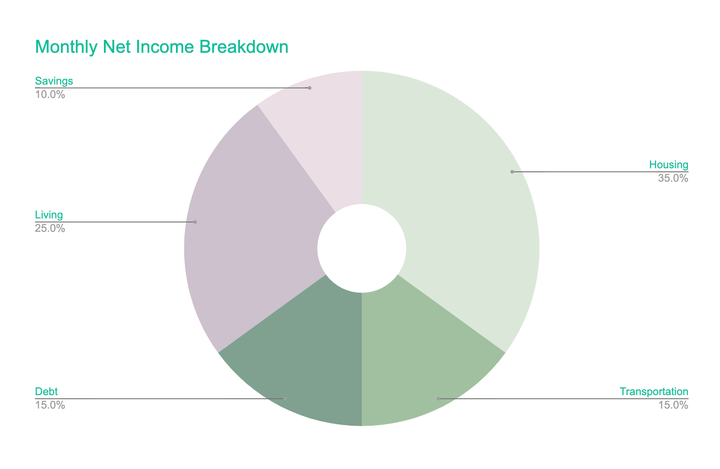
This is part of an ongoing HuffPost Canada series on food insecurity and how it’s affecting Canadians during the COVID-19 pandemic. In this edition, a dietitian and a financial adviser share food budget tips for Canadians on post-CERB government assistance.
With the end of the Canada emergency response benefit (CERB), many jobless Canadians will be relying on government assistance, such as employment insurance (EI) — and depending on what new pandemic relief benefit they qualify for, they could be receiving $2,000 a month to help pay the bills.
Demand is already high for these benefits: Over 240,000 Canadians applied for the Canada Recovery Benefit on its launch day.
While a weekly payment of $500 for up to 26 weeks isn’t chump change, it’s hardly enough to cover living expenses for most Canadians. Rentals.ca reports that the average Canadian rent is $1,769. For an average renter on post-CERB assistance, they’d be left with around $230 after rent — that just barely covers what most people spend on food in a month. That’s not to mention how other factors, like having dependants, may eat up leftover money.
Deciding between paying rent or going hungry is a growing concern, with the pandemic worsening national food insecurity. Before the pandemic, one in eight Canadian households were food insecure. Now, one in seven are going hungry, according to a recent report by Community Food Centres Canada.
To help Canadians receiving post-CERB aid balance the books and keep food on the table, HuffPost Canada spoke to two experts for their advice on food budgeting:
How much you should spend on groceries will vary
Although every financial situation is different, experts commonly recommend 35 per cent of your monthly earnings go to housing and 25 per cent for combined living expenses, like food and clothing.
This ratio is one that Pamela George, an Ottawa-based financial literacy and credit counsellor, said should be used as guidance for healthy spending and not a hard rule; those living in major Canadian cities or are raising families are more likely to spend more of their income on rent.

Grocery expenses vary across the country, but ballpark estimates suggest that Canadians living alone spend at least $200 on food every month, with StatsCan reporting that $387 is what most single-person households end up doling out. Food costs are even more expensive for rural and northern communities; although subsidized, food prices in northern Canada are usually higher than their southern counterparts.
However, George noted it may be unrealistic for an average renter living off their post-CERB benefit to afford that grocery budget: They would spend 88 per cent of money received on housing. As such, George said that many may need to lower or adjust their food budget in order to get by.
See if you qualify for food relief programs
In her hospital-based practice, Toronto-based dietitian Evita Basilio often sees patients who are on government assistance. She helps them cut down costs further by finding other funding streams, such as getting people who are HIV+ access to the Ontario Disability Support Program’s (ODSP) special food allowance, which is available to any disabled Ontarian who qualifies.
“Through that, they’re able to get another $250 a month for food. It’s just not possible to be on a tight budget and live in Toronto,” Basilio said.
Organizations like Foodshare Toronto, Share the Goods, and the People’s Pantry (currently on hiatus to restructure for the second wave of COVID-19) she added, also provide food relief.
Agencies can also be a resource for communities disproportionately affected by food insecurity: the Afri-Can Food Basket and Uplift Kitchen provides services for Black locals, with the Native Women’s Resource Centre offering food support for Indigenous households.
Identify wants versus needs before cutting back
Before slashing your grocery budget in half, George suggests keeping an eye on “leakage” in your budget: People usually fail to budget for food and drinks that cost less than $20, which leads to more monthly spending than intended.
From there, purchasing patterns can often be swapped for cheaper alternatives, like making coffee at home instead of buying it from a cafe.
If further cutting back is needed, George suggested people look at what’s essential for them to function throughout their day and what isn’t.
“For me, I need a cup of coffee in the morning first thing and I make that at home. Any other coffee I have afterwards? That’s a want,” she explained.
Food banks can be life-saving for a post-CERB food budget
Throughout the pandemic, George has advised struggling Canadians to prioritize getting necessary bills covered and use food banks to save money on their already stretched-thin grocery budgets — most of her clients are spending around $75 more on food every month than they did before the pandemic due to higher supermarket prices, take-out meals on stressful days, and trying to keep growing kids full.
“I encourage my clients and say, ‘There’s no shame in going to a food bank. Everybody’s going through this. Let them supplement you,’” she said. “There are people who we wouldn’t think of being food bank users now using them.”
Food bank use is also being encouraged by the Canadian government. Six months after the federal government gave $100 million in aid funds for overwhelmed food banks, prime minister Justin Trudeau announced they would double that amount last Friday.
Basilio agrees food banks can be a big help, but also noted they fail to address poverty like public policy would and aren’t accessible for everyone. Some Canadians may feel too ashamed to reach out. Many banks don’t carry culturally-appropriate food for newcomer families that may be allergic or intolerant to North American staples.
“Food banks are so ingrained in our society as the safety net, but it’s absolutely unfair. Food should be a basic human right,” Basilio pointed out. “We can’t perform well in our daily activities and contribute to society if we aren’t well-nourished ... The government needs to act on creating public policy and income security to pave the way for poverty reduction and ending food insecurity.”
One way income security might be implemented could be through a basic income policy: According to a July report by a parliamentary budget officer, half a year of basic income for all eligible people in Canada would cost the government less than four months of CERB.
How to make the most out of a food bank visit
Anyone can go to a food bank, but Basilio noted that people on fixed incomes and those who are skipping or reducing meals to make money last should highly consider a trip.
Eight uses for food scraps that don’t need to go in the compost bin right away. Story continues after the slideshow.
If you choose to go to a food bank, Basilio shared some helpful tips for your visit or donation drop-off:
Go to the food bank before you get groceries: “You’ll be able to see what you can get and what needs to be supplemented at the store.”
Protein and produce are worth picking up: “At the food bank, try to get these as they’re more expensive items.”
Grains and dairy products are worth buying: “In Canada, we fortify our grains with iron and B vitamins. Dairy products have calcium and vitamin D. These products will prevent nutrient deficiencies and cost less than other staples at the store.”
Meal tips for tight budgets
Basilio previously shared with HuffPost Canada her frugal shopping tips for healthy meals and a grocery list of her favourite essentials.
For those on very fixed incomes who want to maximize nutritional gains, Basilio shared her tips for extremely budget-conscious meals:
Protein
Keep this portion small, focus on filling up on vegetables or grains like rice.
Explore vegetarian protein sources like beans, canned fish, and eggs.
Grains
Buy and cook in bulk, pre-packaged products like “minute rice” are more costly.
Same with hot cereals, as instant oatmeal packets cost more and are less nutritious.
Produce
Can be bought frozen, dried, or canned for lower prices. Frozen vegetables can be easily added to many meals, such as stir-fries, pasta, and stews.
Make fruits and vegetables last longer by keeping them separated in the fridge.
Dairy
Buy four-litre bags of cow milk; leftovers can be frozen for up to three months.
Fortified soy beverages are usually a fairly priced alternative.
General meals
Stir-fry with canned tuna, frozen vegetables, and brown rice.
Pasta, diced canned tomatoes, canned vegetables, and a source of protein.
Bulgur or a similar grain with chopped vegetables and dried fruit, drizzled with an oil and vinegar salad dressing.
Also on HuffPost:
